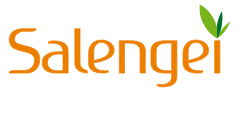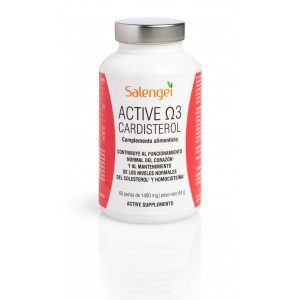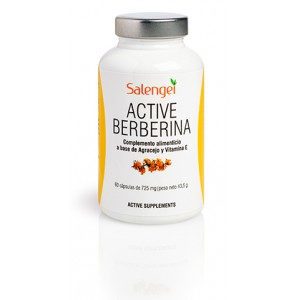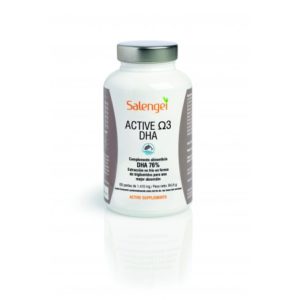Description
The liver detoxifying process consists of a chain of enzymatic reactions that transform undesirable chemicals into substances that are easily eliminated through the urine or faeces. These compounds have to go through enzymatic processes divided into two stages: Phase I and Phase II.
Phase I is an ACTIVATION stage during which toxins or chemicals are transformed into more active intermediary types, therefore more toxic, such as the formation of free radicals that damage cells and DNA. This first stage needs the support of certain antioxidants and other components capable of inhibiting the pro-activation of such carcinogens.
Phase II is a BIOINACTIVATION=DETOXIFYING stage which reduces the molecule’s toxic effect through its conjugation with certain components that facilitate the solubility of the toxic compound, and thus its elimination via the urine and faeces. A slight inhibition of Phase I enzymes together with an induction of Phase II enzymes is considered the basis of preventive treatments.
Chlorella is a unicellular micro algae that measures from two to ten micron and whose molecular structure enables it to bond to heavy metals, pesticides and chemicals, facilitating their elimination. A good source of proteins (about 58 percent of its composition), it is very rich in amino acids such as glutamic acid (one of the main ones), which is essential for the synthesis of glutathione, a tripeptide that functions directly on Phase II of detoxification.
Cysteine is an amino acid with a thiol group, which is susceptible to oxidization due to its ability to undergo redox reactions, giving cysteine antioxidant properties. Together with glycine and glutamic acid, it is essential for glutathione (GSH) biosynthesis. Glutamic acid and glycine are easily available in most western diets, but the availability of cysteine can be the limiting substrate.
The thiol group also has a high affinity for heavy metals, thus making cysteine-containing proteins such as metallothionein bind metals like mercury, lead and cadmium tightly.
As well as being essential for the biosynthesis of glutathione, glycin and cysteine are also necessary for the elimination of bile acid. Furthermore, cysteine is required for the process of sulfation, but sometimes sulfation is not efficient enough, which is why taurine facilitates conjugation for the elimination of sulfates (SO4) via the urine.
Glycine is also involved in the elimination of benzoates (food preservatives).
Alpha lipoic acid acts as a potent antioxidant that regenerates other antioxidants like vitamin C, vitamin E and reduced glutathione. It also has metal-chelating properties.
Milk thistle. The medicinal components of milk thistle are the seeds or fruits. When the fruit ripens it contains three powerful plant elements collectively called silymarin which help the liver in three ways:
-
It is a potent antioxidant that protects the liver (and possibly other organs) against harmful oxidation
-
It protects it against toxins and helps in cases of hepatitis B and C
-
It acts against fatty liver disease (often caused by excessive alcohol intake), and protects against certain medications that damage the liver when taken for long periods of time.
Turmeric acts as an antioxidant, antiinflammatory and hepatoprotector, and has similar detoxifying properties to milk thistle. Turmeric can help with disorders such as cirrhosis and fatty liver, as well as reduce hepatic lesions caused by chemicals and medicines. It has potential to improve biliary function.
Resveratrol helps mainly as an inhibitor of proactivation of Phase I carcinogens.
Lycopene helps in the process of detoxification of Phase II via nuclear factor E2 (Nrf2), a key factor of cellular response to oxidative stress of cells and other tissues. The buildup of nuclear Nrf2 activates target genes of Phase II antioxidants’ enzymes, such as GST and GSH.
Selenomethionine is an essential trace element. The selenide ion forms a very stable compound, insoluble with mercury, and provides relief of mercurialism symptoms. It can also be incorporated with organic molecules, and mercury’s organic selenium complexes can be transported through membranes. The detoxifying process can also deplete selenium-dependent enzymes such as glutathione peroxidase.
Zinc plays an important detoxifying and antioxidant role as an SOD (superoxide dismutase) cofactor.
Indications
Detoxifying processes for heavy metals and other environmental chemicals
Liver disorders, for its hepatoprotecting and cleansing effects
Dosage / Suggested use
First week: Take 1 capsule a day on an empty stomach.
Second week: Take 1 capsule on an empty stomach and 1 a short time before dinner (2 capsules per day).
Third week: As week two, but add 1 capsule a short time before lunch (3 capsules per day).
The dosage can be increased to up to 6 capsules per day (2-2-2).
Content
Nutrition facts
| NUTRITION FACTS | 1 capsule | 3 capsules |
|---|---|---|
| Chlorella algae powder (Chlorella Beijerink) | 100 mg | 300 mg |
| L-cysteine | 100 mg | 300 mg |
| L-taurine | 100 mg | 300 mg |
| L-glycine | 100 mg | 300 mg |
| Alpha-lipoic acid | 75 mg | 225 mg |
| Milk thistle dry seed extract 80% sylimarin (Silybum marianum L) | 75 mg | 225 mg |
| Turmeric CURSOL dry extract | 50 mg | 150 mg |
| Resveratrol 95% (Polygonum cuspidatum) | 50 mg | 150 mg |
| Lycospericum esculentum fruit | 33.3 mg | 100 mg |
| -Lycopene 10% | 3.3 mg | 10 mg |
| Magnesium stearate (anticaking agent) | 6 mg | 18 mg |
| Silicon dioxide (anticaking agent) | 3 mg | 9 mg |
| NUTRITIONAL VALUE | 3 capsules | NRV% |
| Selenium (from selenomethionine) | 105 µg | 190.9 |
| Zinc (from zinc citrate) | 22.5 mg | 225 |
| NRV* Nutrient reference values | ||





